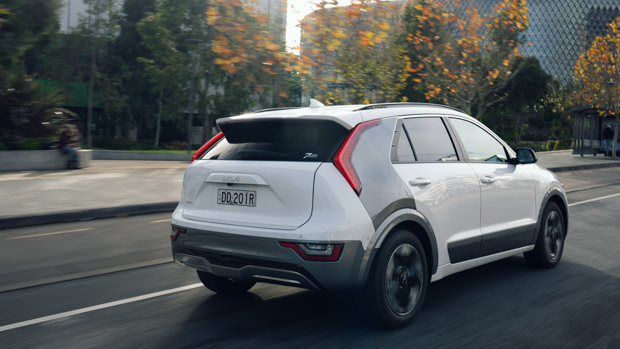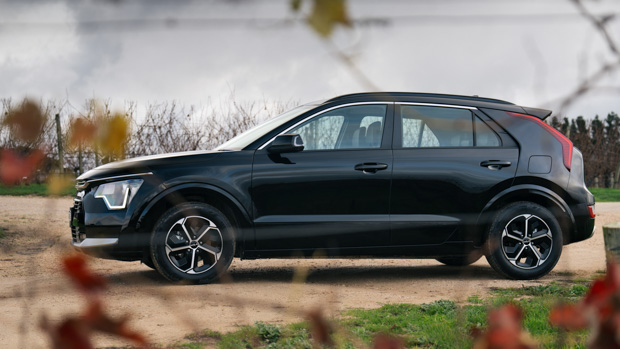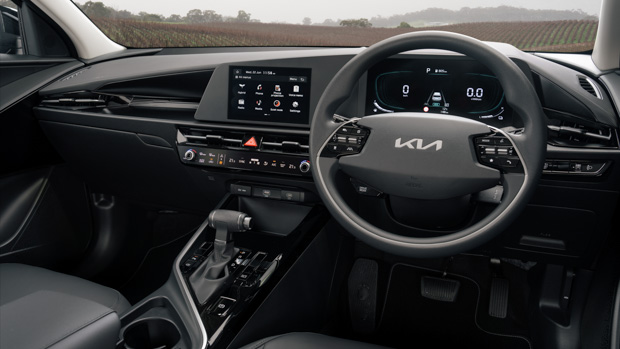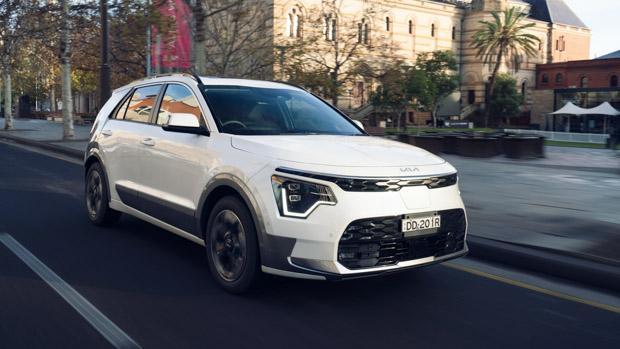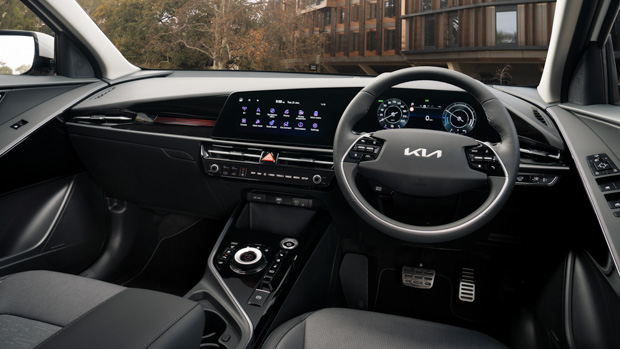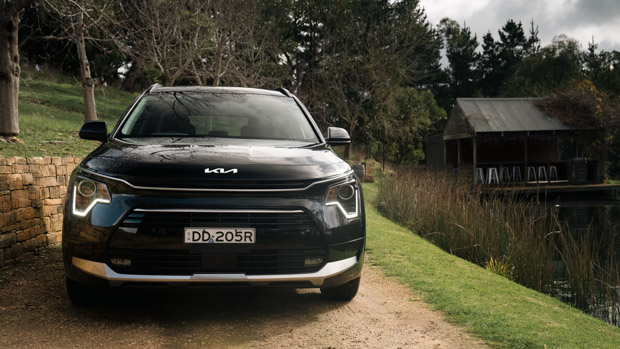-
Car Reviews
- Car News
-
Car Comparisons
Latest comparisons
- Chasing Deals
Prices increase across the board, but entry-level electric Niro usefully undercuts where Kia’s lauded EV6 crossover pricing starts
Australian pricing has been announced for the second-generation Kia Niro – Kia’s small-to-midsize SUV that is offered in full-electric and series-parallel petrol-electric hybrid versions locally.
While Niro pricing jumps across the board compared to the outgoing shape – by up to $4390 in the case of the $44,390 entry-level Niro S hybrid model, costs for the all-electric model increase only gently and still undercut where Kia’s popular but supply-constrained EV6 electric SUV starts out.
At $65,300, the Niro S full-electric model is $2690 cheaper than an EV6 Air – and that gap will only grow once an all-but-confirmed EV6 price increase takes effect in Australia in the coming months.
With 460km of range from its 64.8kWh battery, the full-electric version of the Niro provides a lower-cost alternative to crossovers like the new Tesla Model Y (from $72,300) while slotting above the budget positioning of the China-made BYD Atto 3 (from $44,381).
The fully-electric Niro is about $20,000 more expensive than the hybrid, which returns in more fashionable second-gen form to give buyers stuck in the long Toyota RAV4 hybrid queue a Korean-made ‘self-charging’ alternative.
The outgoing Niro plug-in hybrid has been deleted in Australia, with the range now offering a narrower choice of series-parallel hybrid or full-electric powertrains.
Hybrid models range from $44,380-$50,030 and produce 104kW/265Nm from the combined effort of their 77kW/144Nm 1.6-litre naturally-aspirated petrol four-cylinder engine and 32kW permanent-magnet electric motor. The hybrid uses a six-speed dual-clutch automatic transmission.
Meanwhile, the electric Niro is priced between $65,300-$72,100. The EV makes 150kW/255Nm from its front-mounted permanent-magnet electric motor while making use of a single-speed reduction gear-type transmission.
The new Niro sits on a revised version of the old car’s combustion-derived platform. Both Niro powertrains continue to be front-wheel drive (FWD) only, in contrast to the brand’s EV6 crossover that sits on the Kia-Hyundai e-GMP dedicated EV architecture with a choice of rear-wheel drive (RWD) or all-wheel drive (AWD).
Like the previous, first-generation Niro that arrived in Australia in 2020, the more stylish second-gen car is available to Australian buyers in entry-level S specification or a fully-loaded GT-Line trim across hybrid and full-electric powertrains.
Two trim grades continue to be offered to Australian Niro buyers: an entry-level S ($44,380 hybrid, $65,300 full-electric), and fully-loaded GT-Line trim ($50,030 hybrid, $72,100 electric).
Upgrading from hybrid to electric requires shelling out $20,920 extra in S guise or $22,070 more in GT-Line guise, while the upcharge from S to GT-Line is $5650 in hybrid or $6800 in electric.
Standard equipment on the Niro S models for both powertrains takes in:
Note that the fully-electric Niro S also adds a ‘premium’ steering wheel material and a larger 10.25-inch digital driver display over the hybrid.
Upgrading to the GT-Line specification for an extra $5650-6800 adds these features:
The GT-Line also scores a sunroof if you go for the fully electric powertrain, as well as a Harman-Kardon stereo with eight speakers. Both electric versions have a tyre mobility kit while the hybrids have a space-saver spare wheel and tyre.
Related under the skin to the Hyundai Kona Electric – albeit with a number of improvements reflecting its status as a new-generation model – the Niro was lauded for high efficiency in previous generation.
That status is slated to continue, with the new Niro rated to return the same frugal 14kWh/100km as a base-model EV6.
According to WLTP ratings, the full-electric Niro will offer a range of 463km from its relatively modest 64.8kWh lithium-ion polymer battery. By contrast, the dearer EV6 has a larger 72.6kWh battery.
Unlike the Kona Electric, there is no short-range Niro offered in Australia, though a smaller-battery Niro will be available overseas.
DC rapid-charging times differ substantially, with the 400-volt Niro capped at a low 80kW DC speed, while the 800-volt EV6 can be recharged at up to 233kW. In practice, the Niro requires 43 minutes to be recharged to 300km range – the EV6 needs just 18 minutes.
Part of the Niro’s efficiency comes from its relatively light mass for a battery-electric vehicle. Kia says the EV version tips the scales at 1727kg, compared to 1454kg for the hybrid.
All prices listed are before on-road costs.
Latest news
About Chasing cars
Chasing Cars reviews are 100% independent.
Because we are powered by Budget Direct Insurance, we don’t receive advertising or sales revenue from car manufacturers.
We’re truly independent – giving you Australia’s best car reviews.
